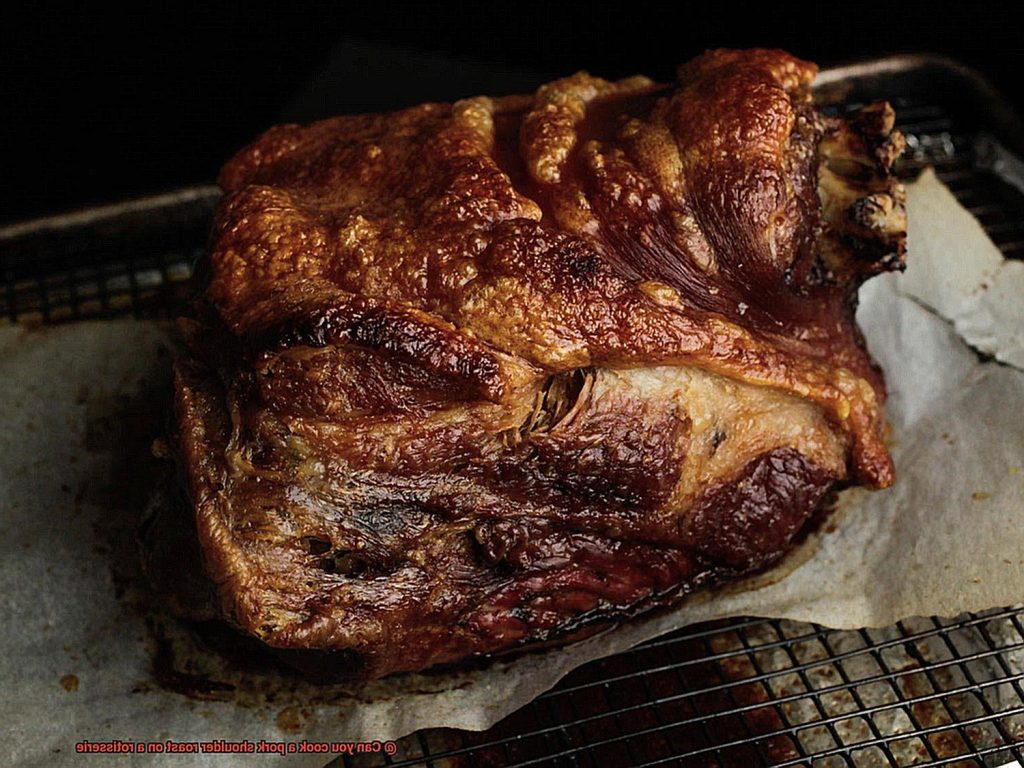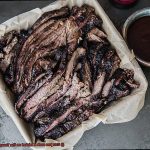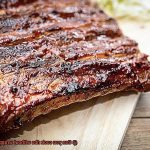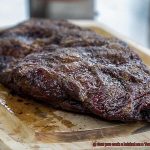Are you tired of the same old oven-baked pork roast recipes? Want to switch things up and try something new that’ll leave your taste buds dancing with joy? Well, we’ve got some great news for you. You can use your rotisserie to cook a mouth-watering pork shoulder roast that’s sure to impress.
Cooking on a rotisserie not only gives an even cook but also infuses the meat with a delicious smoky flavor. It’s effortless too, leaving you free to enjoy your meal without any hassle.
But before you dive in headfirst, there are a few things you need to know about cooking a pork shoulder roast on a rotisserie. Firstly, make sure the roast is well-seasoned so it retains its flavor throughout the cooking process. Secondly, ensure that the roast is evenly shaped and stable to guarantee even cooking. Lastly, maintain the right temperature (charcoal or gas) for perfect tenderness.
Don’t let these points intimidate you though – cooking a pork shoulder roast on a rotisserie is easy and anyone can do it. In this blog post, we’ll guide you through the process from start to finish with tips and tricks guaranteed to give you a succulent, delicious roast.
So, grab your apron and get ready to impress your friends and family with this fantastic recipe.
Contents
Benefits of Cooking a Pork Shoulder Roast on a Rotisserie
Look no further than your trusty rotisserie attachment. Cooking a pork shoulder roast on a rotisserie has numerous benefits that make it a popular choice among grilling enthusiasts.
Firstly, the rotisserie allows for even cooking on all sides, resulting in a juicy and flavorful roast. The constant rotation of the meat also helps it baste itself, ensuring that it stays moist and tender throughout the cooking process. You won’t get dry or undercooked bits with this method.
Another advantage of using a rotisserie is that it allows for maximum flavor infusion. As the meat rotates, the juices and marinade are evenly distributed, resulting in a flavor-packed roast. To take it up a notch, consider using a dry rub or marinade to season the pork before cooking it. Your taste buds will thank you.
Using a rotisserie also frees up your oven or stovetop for other dishes. This makes it a convenient option for holiday meals or dinner parties. Plus, because the meat is suspended over the heat source rather than directly on top of it, there is less risk of burning or overcooking the pork. You can focus your attention on other aspects of the meal without worrying about your main dish.
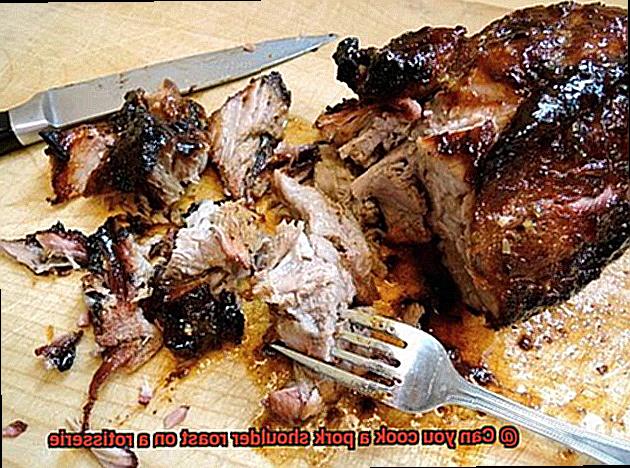
Not only is cooking a pork shoulder roast on a rotisserie practical, but it’s also visually impressive. The slow rotation and golden-brown exterior create an eye-catching centerpiece for any meal. Your guests will be wowed by the presentation, and the carving process becomes an exciting event as you slice off succulent pieces of perfectly cooked pork.
Essential Equipment for Rotisserie Grilling
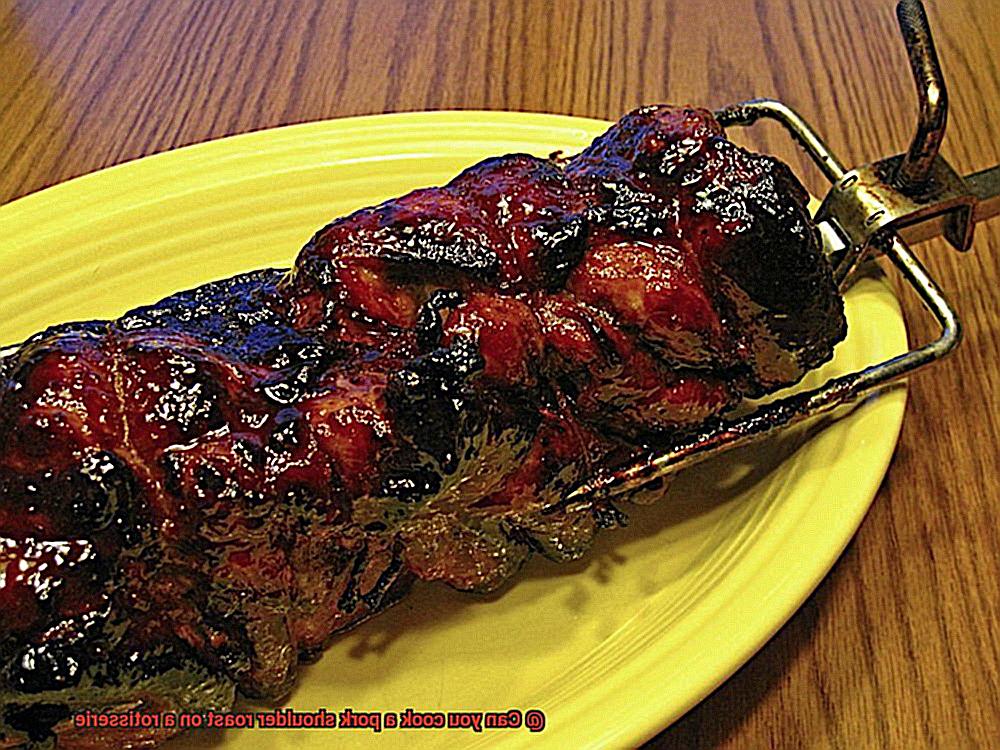
Rotisserie grilling is the perfect way to achieve even cooking and maximum flavor infusion. However, to make the most of this technique, it’s essential to have the right equipment.
The first and foremost piece of equipment you’ll need for rotisserie grilling is a rotisserie attachment that fits your grill perfectly. It’s crucial to choose a rotisserie that’s suitable for your grill’s size and the amount of meat you plan to cook. Choosing the wrong size could result in a pork shoulder roast that’s too big or small for your rotisserie, leading to uneven cooking.
Next up, you’ll need a sturdy spit rod, which goes through the center of the meat and holds it in place as it rotates on the rotisserie. It’s important to choose a spit rod that’s strong enough to hold the weight of your pork shoulder roast without bending or breaking.
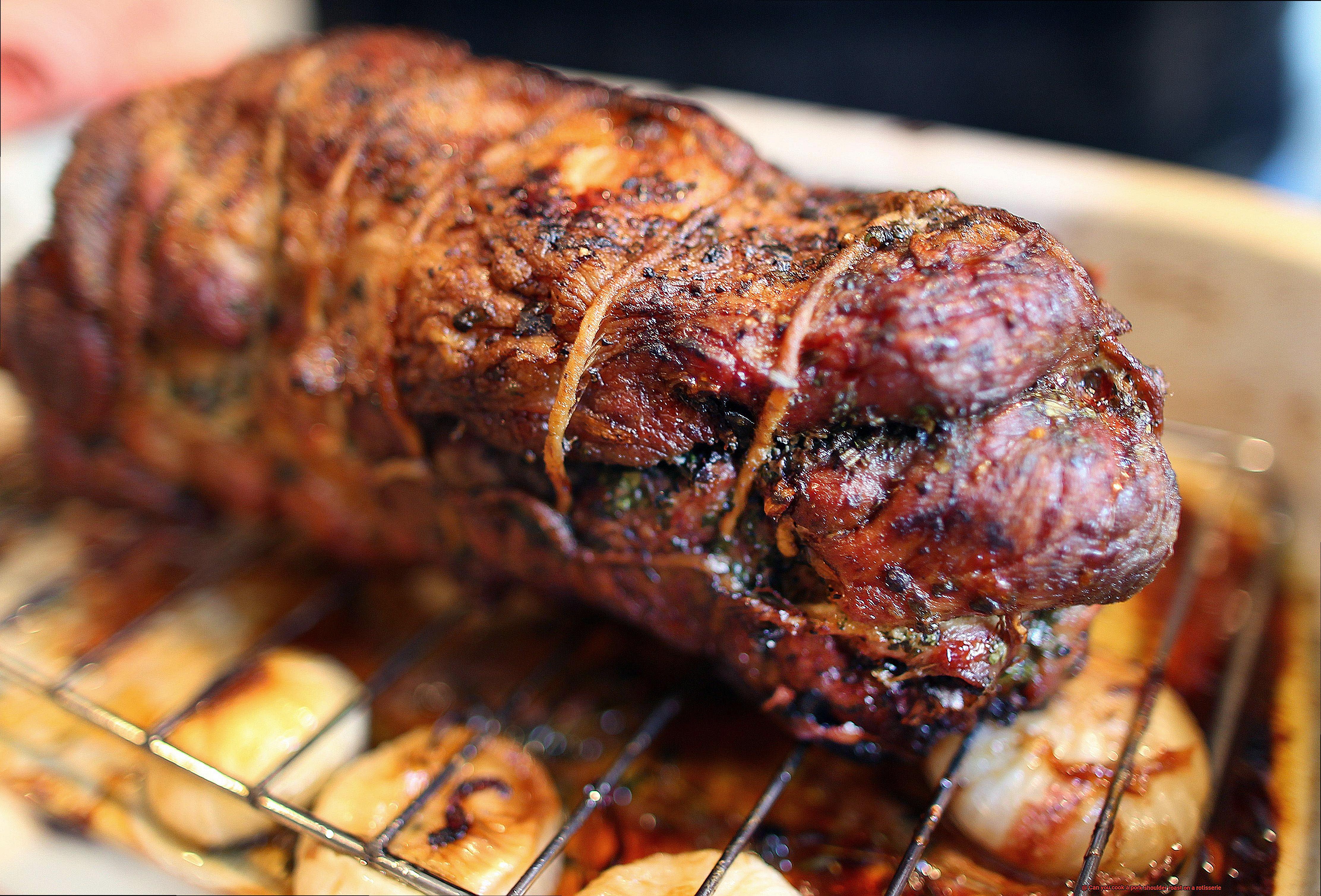
To ensure that your pork shoulder roast is cooked to perfection, invest in a good quality meat thermometer. This tool will allow you to monitor the internal temperature of the meat as it cooks, ensuring that it reaches a safe temperature while not overcooking.
In addition to these essential pieces of equipment, don’t forget about accessories. A drip pan is a must-have to catch any juices that may drip from the pork shoulder roast during cooking. This not only helps keep your grill clean but also creates a delicious au jus. Also, heat-resistant gloves are essential for handling hot equipment safely.
Preparing the Pork Shoulder Roast
Don’t fire up that grill just yet – the key to achieving a scrumptious and succulent end result is proper preparation. Let’s dive into the specifics of how to get your cut of meat ready for the cooking process.
Trimming excess fat is a crucial first step to ensure that your pork shoulder cooks evenly and doesn’t cause flare-ups. Too much fat can also result in an unappetizing greasy taste. Take the time to carefully trim any excess fat from the surface of your pork shoulder roast.
Next up: silver skin. This tough, silvery membrane can be a real challenge for even the most experienced chefs. But trust us, it’s worth taking the extra time and effort to remove it. Not only is it unappetizing, but it can also make the meat chewy and tough.
Now let’s talk seasoning – this is where you can really make your mark on your pork shoulder roast. Be generous with your favorite rub or marinade, making sure to massage it into all sides of the meat. Allow the flavors to penetrate by letting it sit in the fridge for at least an hour before cooking.
When you’re ready to cook, let your pork shoulder roast sit at room temperature for about 30 minutes before placing it on the rotisserie. Properly securing the meat with prongs or a spit rod is essential to avoid any disasters mid-cook.
Tips for Placing the Roast on the Spit
You might want to try cooking it on a rotisserie. But before you do, it’s crucial to know how to place the roast on the spit correctly. Here are some tips and tricks to help you get started.
Evenly distribute the weight
The first step in placing the roast on the spit is to ensure that the weight is evenly distributed. This will prevent any imbalance and ensure that the roast rotates evenly while cooking. You can do this by making sure that the roast is centered correctly on the spit. A properly centered roast will also help it cook evenly all around and prevent any parts from being overcooked or undercooked.
Secure the roast firmly
It’s essential to secure the roast firmly onto the spit to prevent it from slipping or rotating unevenly. One way to do this is by using butcher’s twine to tie the roast onto the spit tightly. This will also help it cook evenly all around and prevent any sections from falling apart during cooking.
Center it correctly
Make sure that the roast is centered correctly on the spit, with an even distribution of meat on both sides. This will ensure that it cooks evenly all around and prevent any parts from being overcooked or undercooked. A well-centered roast will also rotate smoothly, preventing any damage to your equipment or uneven cooking.
Check clearance
Ensure that there is enough clearance between the roast and the heat source so that it doesn’t burn or char. Generally, a distance of at least six inches is recommended to prevent any flare-ups or uneven cooking.
Monitor as it rotates
As your roast rotates, keep an eye on it periodically to see if any parts are cooking too quickly or not cooking enough and adjust accordingly. Use a meat thermometer inserted into the thickest part of the roast to check for doneness.
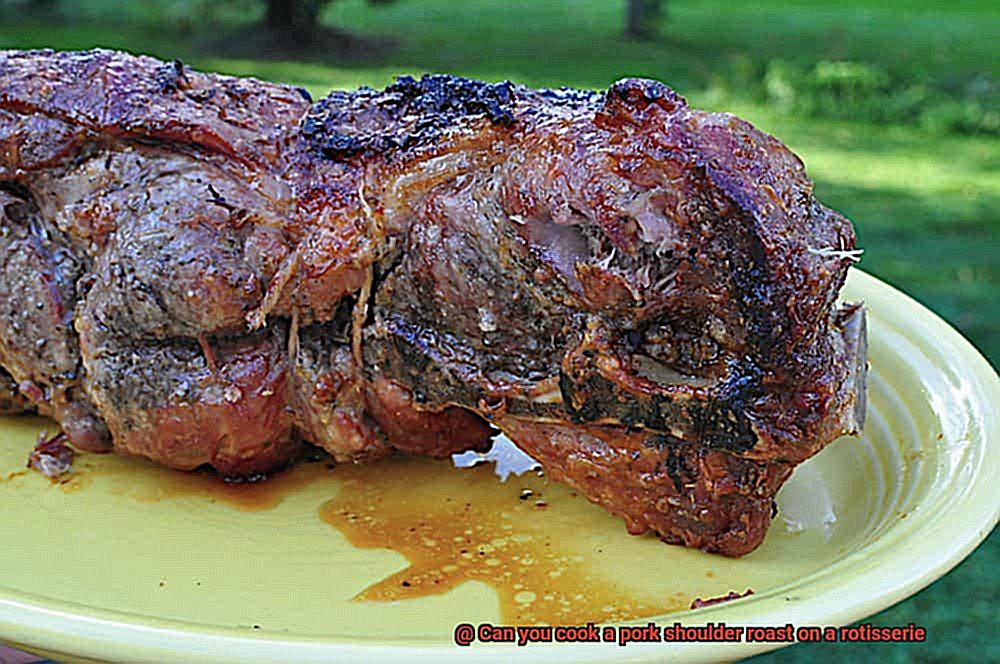
How to Cook a Pork Shoulder Roast on a Rotisserie
Cooking it on a rotisserie might be just the challenge you need. Here are five key steps to follow when preparing and cooking a pork shoulder roast on a rotisserie:
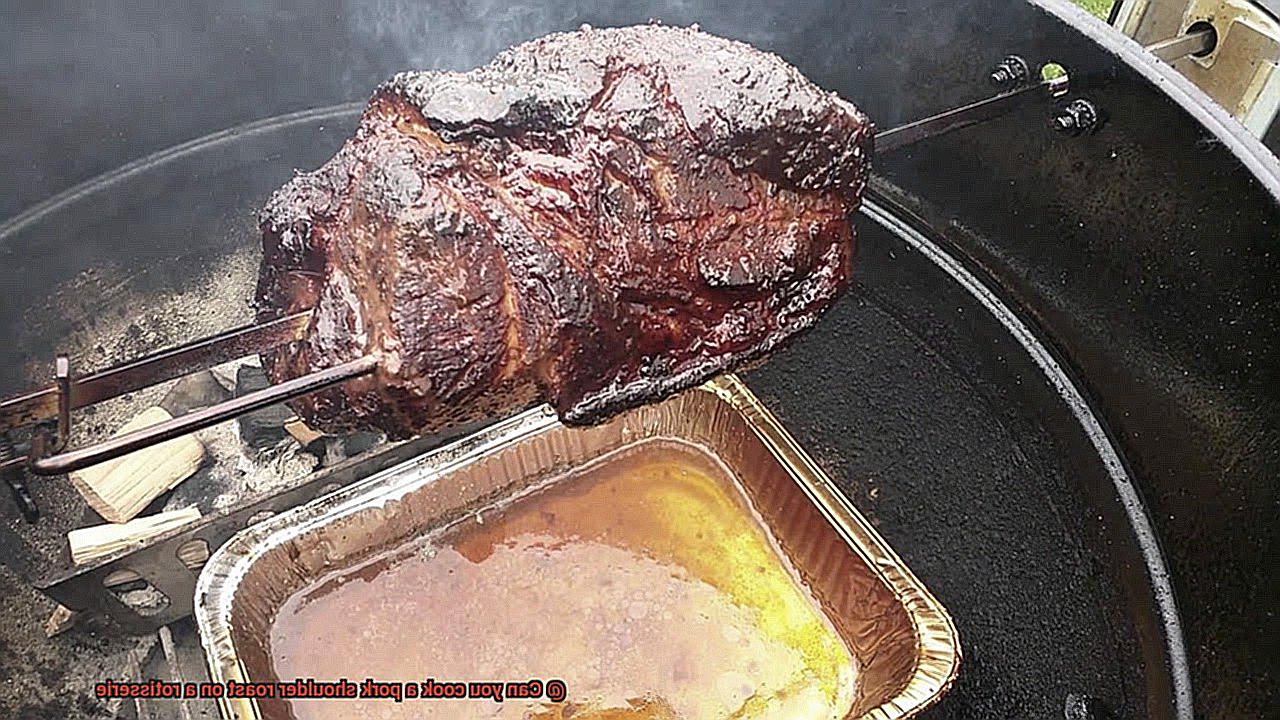
Selecting the Right Cut of Meat
It’s important to choose a pork shoulder roast as it has enough fat to keep the meat moist and tender during the cooking process.
Preparing the Meat
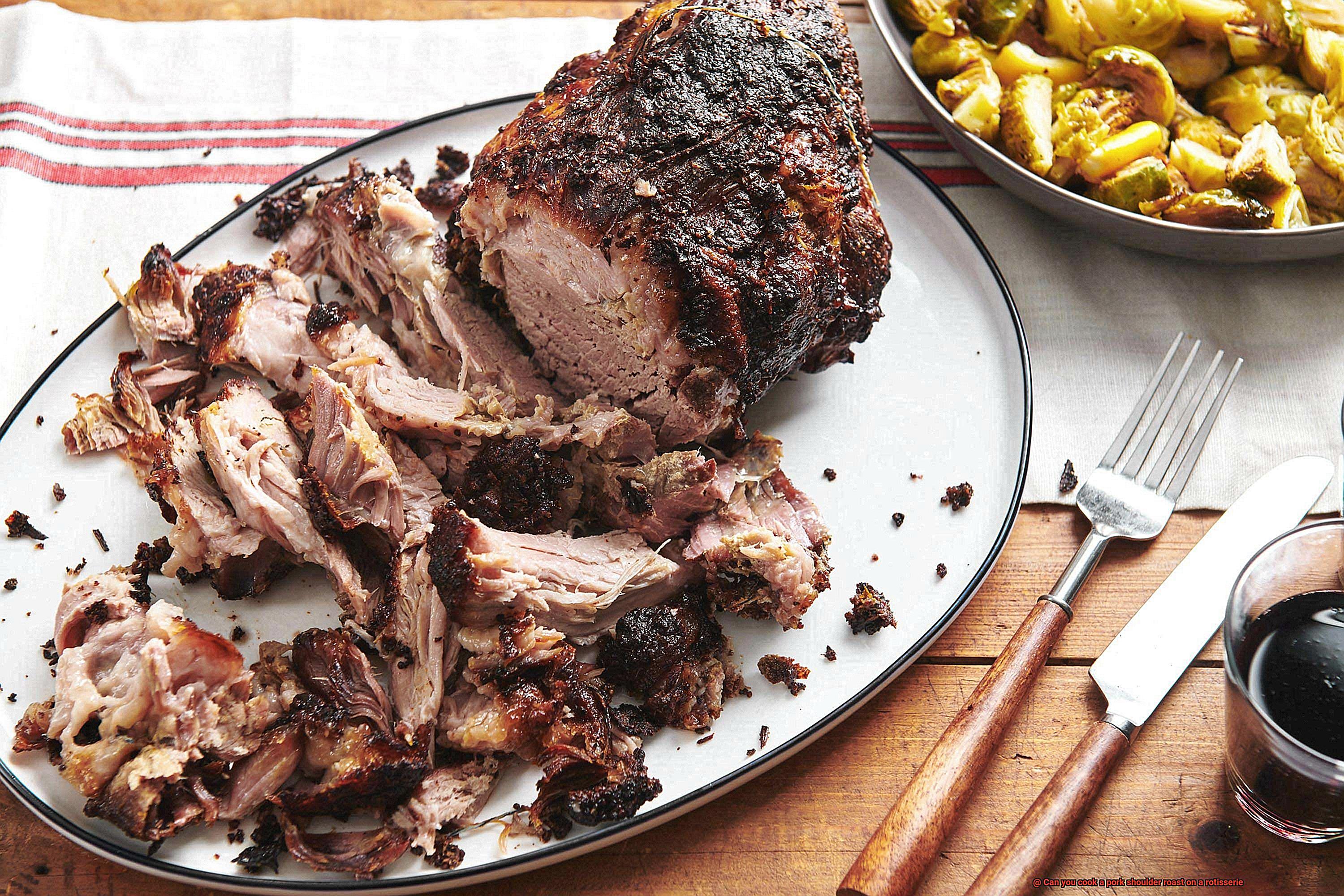
Start by trimming any excess fat from the pork shoulder roast, being careful not to remove too much as it can impact the flavor and texture of the meat. Next, season the roast generously with your preferred spice rub or marinade, making sure to coat the meat evenly.
Setting Up the Rotisserie
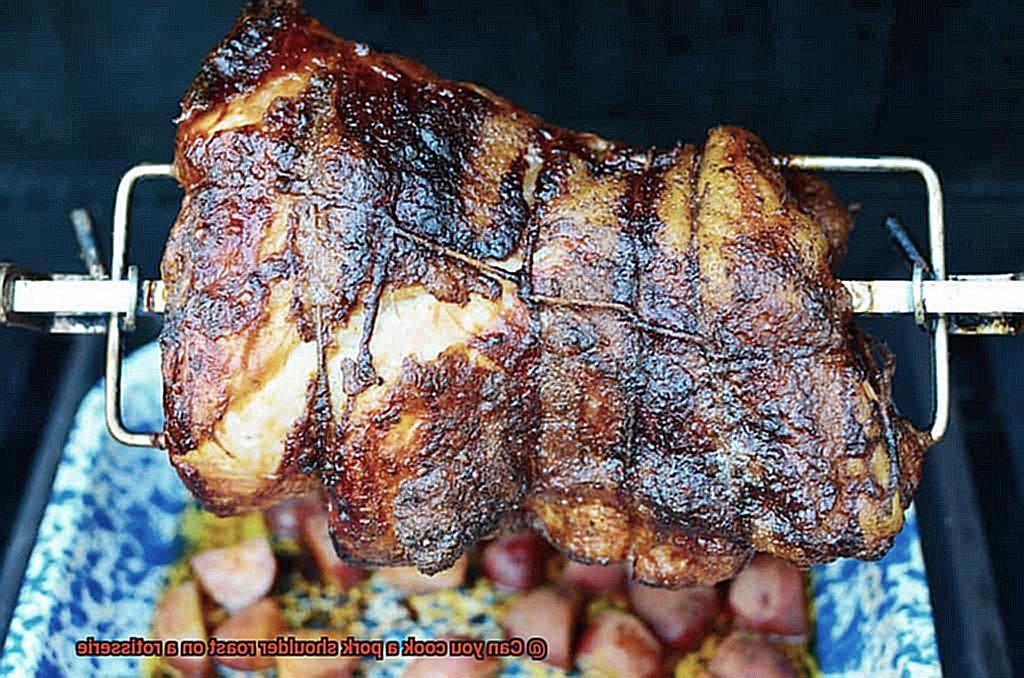
Make sure that all parts are clean and in good working order before attaching the pork shoulder roast securely to the spit. It’s important to balance the meat evenly on the spit so that it rotates smoothly during cooking.
Cooking the Meat
Preheat your grill to medium-high heat and place a drip pan underneath the pork shoulder roast to catch any excess drippings. Once your grill is hot, turn on the rotisserie motor and let the pork shoulder roast slowly rotate over the heat. Monitor both the temperature of the meat and grill throughout the cooking process and adjust as needed to maintain a consistent temperature.
Resting and Carving
When your pork shoulder roast is fully cooked, carefully remove it from the rotisserie and let it rest for at least 10-15 minutes before carving. This allows the juices to redistribute throughout the meat, resulting in a moist and flavorful roast.
Monitoring the Internal Temperature of the Roast
The key to perfecting this dish is monitoring the internal temperature of the meat. This small step can make a massive difference in achieving a succulent and safe-to-eat meal.
First and foremost, invest in a reliable meat thermometer. This tool is essential for any grill master and guarantees that your roast is cooked to perfection. By inserting the thermometer into the thickest part of the meat, you can get an accurate reading of the internal temperature, avoiding any guesswork.
Let’s talk numbers. The recommended internal temperature for a fully cooked pork shoulder roast is 145°F. Once you hit this temperature, it’s time to remove the roast from the rotisserie and let it rest for at least 10 minutes. This brief resting period allows the juices to redistribute, resulting in a tender and flavorful piece of meat.
But beware. Overcooking a pork shoulder roast can lead to dry and tough meat. So, monitoring the internal temperature is crucial for achieving a juicy and delicious result. Remember, quality over quantity.
Resting the Pork Shoulder Roast After Cooking
Are you ready to take your pork shoulder roast to the next level on the rotisserie? Then listen up because I have some insider tips that will ensure you end up with a juicy and tender meat that will leave your guests raving.
First and foremost, let’s talk about the crucial step of resting your pork shoulder roast after cooking. This is a step that should never be skipped if you want to achieve a succulent end product. Similar to letting a good steak rest before cutting into it, resting your roasted pork shoulder allows the juices to redistribute throughout the meat, resulting in optimum flavor and tenderness.
But why is it so important to rest the pork shoulder roast? During the cooking process, the meat’s internal temperature rises, causing the juices to move towards the center of the meat. Resting the roast allows these juices to evenly distribute throughout the meat, ensuring that every bite is moist and flavorful. It’s like a peaceful meditation session for your pork shoulder roast, allowing it to settle down after all that heat.
- Pro tip: when resting your pork shoulder roast, avoid covering it with foil or any other material. Doing so can cause condensation, which will make your meat soggy. Instead, loosely tent the roast with foil to keep it warm while resting.
- One more thing: resist the temptation to carve into your pork shoulder roast too soon after cooking. Cutting into it prematurely can cause the juices to spill out, resulting in a dry and tough end product. Give it at least 15-20 minutes before carving into it – trust me, your patience will be rewarded.
Carving and Serving the Finished Product
You’ve made it to the moment of truth – carving and serving your mouth-watering pork shoulder roast cooked on a rotisserie. But before you dive straight into slicing, take a deep breath and remember that patience is key. Allowing your roast to rest for at least 15-20 minutes will create a more tender and flavorful final product that will have your taste buds dancing.
Now, let’s talk about carving. Start by removing any twine or skewers used to secure the roast on the rotisserie and grab a sharp carving knife. Remember to slice thin, even pieces against the grain of the meat while removing any excess fat or gristle as you go. The result? Perfectly cooked, succulent pork that will have everyone at the table craving for more.
When it comes to serving, the options are endless. Do you prefer it solo with a side of barbecue sauce or other condiments? Or maybe you want to up your game and go for some sandwiches – rolls or bread with toppings like coleslaw or pickles are always a hit. Whatever your preference, your guests will be blown away by the tantalizing taste of your rotisserie pork shoulder roast.
lV8VucqFzqU” >
Conclusion
In conclusion, cooking a pork shoulder roast on a rotisserie is an excellent way to elevate your culinary skills and impress your guests with a stunning centerpiece. The advantages of using a rotisserie are numerous – from even cooking on all sides to maximum flavor infusion, and freeing up valuable oven or stovetop space for other dishes.
However, achieving succulent and delicious results requires the right equipment, including a perfectly fitting rotisserie attachment for your grill, a sturdy spit rod, meat thermometer, drip pan, and heat-resistant gloves. Proper preparation is equally crucial – trimming excess fat and silver skin, generously seasoning with rub or marinade, and securely fastening the meat onto the spit.
To perfect this dish, monitoring the internal temperature of the roast is key. A fully cooked pork shoulder roast should reach an internal temperature of 145°F. Resting the roast after cooking allows juices to redistribute throughout the meat for optimum tenderness and flavor.
When it comes time to serve up your masterpiece, carving thin slices against the grain while removing any excess fat or gristle is essential. This ensures that each bite is juicy and packed with flavor.

